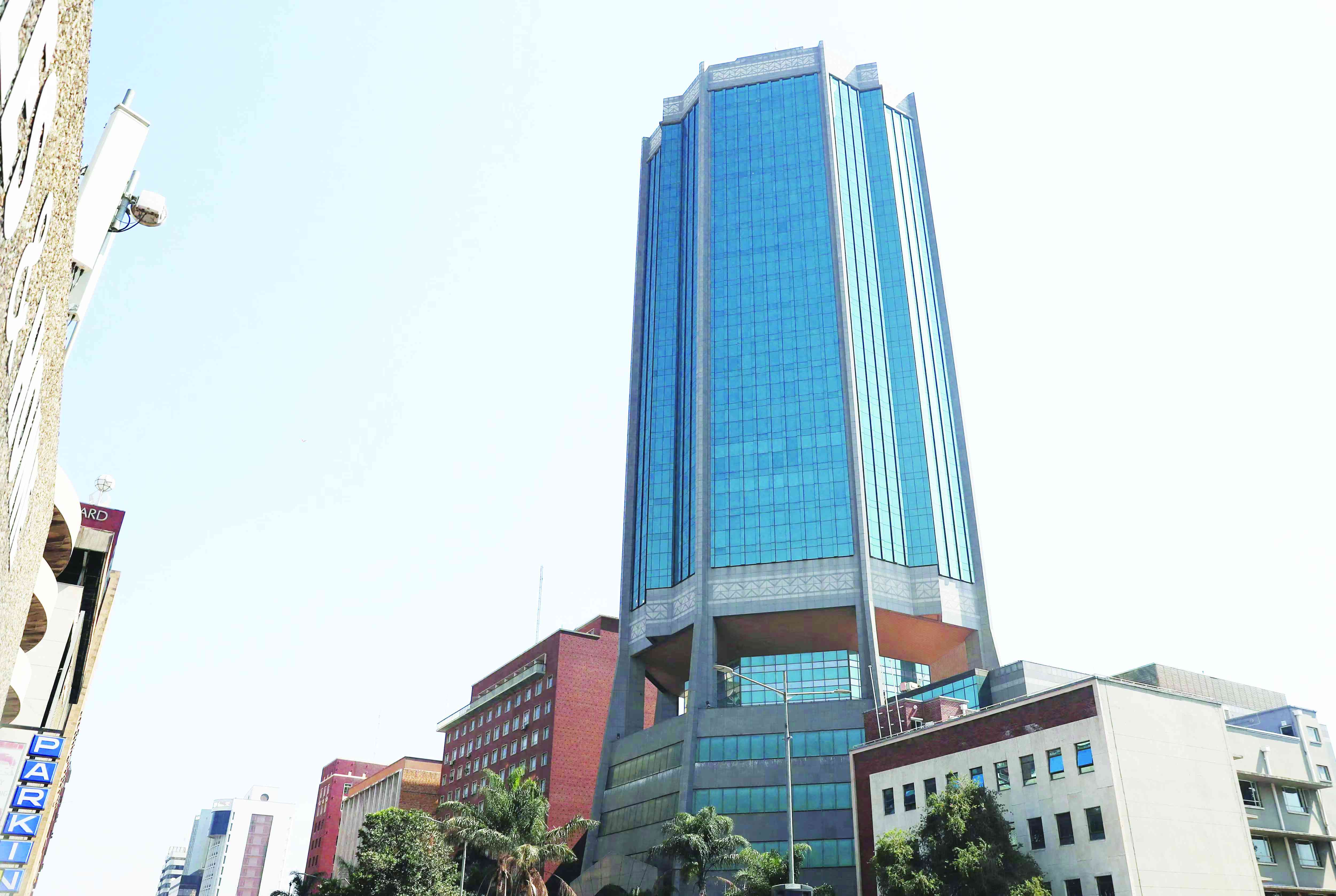
THE Reserve Bank of Zimbabwe (RBZ, pictured) unveiled its 2025 Monetary Policy Statement (MPS) last week, setting the stage for a disciplined and structured approach to economic stability.
At the heart of this policy is a commitment to fostering price and currency stability while ensuring a sustainable financial sector.
The policy reinforces a tight monetary stance, aiming to consolidate the macroeconomic gains of late 2024.
A major focus of the policy is strengthening the local currency, the Zimbabwe Gold (ZiG), by increasing foreign reserves and optimising the foreign exchange market to enhance liquidity and efficiency.
The RBZ is determined to curb inflation through prudent liquidity management, while targeted financing mechanisms have been introduced to support productive sectors of the economy.
Furthermore, the central bank is tightening financial regulations to maintain banking sector stability, all in an effort to restore confidence in Zimbabwe’s monetary system and create an environment conducive to business growth.
One of the most notable measures is the adjustment in foreign currency retention for exporters, reducing the retention rate from 75% to 70%, with 30% of foreign earnings now being surrendered to the RBZ. This move increases the amount of ZiG in circulation, reinforcing its usage.
However, it limits exporters’ immediate access to USD, potentially straining foreign obligations. To mitigate this, the RBZ has introduced the US Dollar Denominated Deposit Facility (USDDDF), allowing exporters to invest the surrendered 5% forex in an interest-bearing USD deposit at the central bank, which can be withdrawn in ZiG.
- Zimpraise to release album Number 13
- Hyperinflation headache for accountants
- Awards target married couples
- Zimpraise to release album Number 13
Keep Reading
This measure is designed to reduce forex hoarding, while ensuring liquidity, but it may also restrict exporters’ flexibility in accessing USD when needed. Reforms in the interbank foreign exchange market aim to improve price discovery and enhance exchange rate efficiency by removing the 5% trading margin on forex transactions and increasing dealer flexibility.
This is expected to enhance forex liquidity, though it may introduce volatility risks. Interest rates remain a key tool in the central bank’s policy arsenal, with the bank policy rate maintained at 35% to support a tight monetary stance.
While this encourages local currency savings and discourages speculative borrowing, the high cost of credit could limit business expansion and access to working capital. To further tighten liquidity, the RBZ has standardised statutory reserve requirements at 30% for demand deposits and 15% for savings and fixed deposits.
This move helps control money supply and inflation but could restrict lending capacity, affecting businesses’ access to credit. However, a new targeted finance facility (TFF) has been introduced to provide funding for productive sectors, including wholesalers and retailers.
While this facility is expected to provide much-needed liquidity, businesses may have to navigate stringent eligibility requirements. The policy also mandates that all businesses report financial statements in ZiG, standardising reporting but complicating transactions for companies dealing in multiple currencies.
This measure requires businesses to make accounting adjustments while managing potential forex translation losses. Additionally, the government is promoting digital payments and financial inclusion by requiring all businesses to install POS machines.
This step is expected to enhance Zimbabwe’s digital economy but may add compliance costs for small businesses. Beyond promoting financial inclusion, the push for digital payments and POS machines is also a strategy to broaden the country’s tax base.
With the formal sector shrinking due to company closures and struggling businesses, the government is looking to tap into transactions that previously went unrecorded in the informal economy.
The mandatory use of POS machines ensures that more transactions are captured in the formal financial system, thereby increasing tax revenues. While this may help government revenue collection, small businesses may face additional costs associated with compliance and infrastructure setup.
This shift highlights the government’s recognition that digital transactions are a key tool for enhancing fiscal capacity, especially in an environment where reliance on traditional corporate taxes has become unsustainable.
With the RBZ aggressively increasing its foreign reserves — currently standing at US$550 million — the stability of the ZiG is expected to improve, reducing parallel market speculation. A predictable exchange rate benefits importers and stabilises pricing structures, but achieving widespread confidence in the local currency remains a challenge in Zimbabwe’s dollarised economy.
In response to these policy measures, businesses will need to make strategic financial and operational adjustments. Managing forex exposure is critical, especially with the reduced forex retention for exporters.
To mitigate exchange rate risks, companies must optimise forex usage by prioritising essential imports and carefully managing foreign obligations. Holding foreign currency in interest-bearing accounts at the RBZ could also offer some benefits.
Given that businesses must now report in ZiG, implementing a robust forex management strategy will be essential to avoid unnecessary losses from currency fluctuations. Borrowing costs remain high, with the bank policy rate at 35% and statutory reserves at 30%.
To navigate these constraints, businesses should minimise reliance on bank credit and explore alternative financing methods, such as equity funding and strategic partnerships. Negotiating better credit terms with suppliers and utilising internally generated funds will be key to maintaining financial flexibility.
Taking advantage of sector-based lending under the TFF may also provide relief, though access to these funds will depend on compliance with strict eligibility requirements. With new reporting obligations requiring financial statements to be presented in ZiG, businesses must ensure accurate tracking of exchange rate movements to prevent valuation losses.
Additionally, integrating digital payment solutions will enhance efficiency and customer convenience while reducing dependency on cash transactions, which often come with high banking cost. As the cost of doing business rises, companies must reassess their pricing models and cost structures.
Adjusting prices to accommodate inflationary pressures and forex fluctuations will be necessary, while sourcing from local suppliers could help mitigate the impact of expensive imports.
Diversifying revenue streams by exploring new export markets and expanding product offerings will also be crucial in maintaining profitability. Given the tight credit conditions, businesses should adopt a cautious approach to expansion plans that require substantial borrowing.
Instead, the focus should be on improving productivity, optimising processes, and cutting costs to ensure long-term sustainability. Investing in automation and digital solutions can enhance operational efficiency while reducing costs.
Government-backed initiatives that provide financial relief or incentives should also be explored to support growth. Ultimately, businesses must strengthen their forex and liquidity management strategies, adopt flexible pricing structures incorporating both USD and ZiG, and reduce dependency on bank loans by emphasising self-financing.
Compliance with new financial regulations, leveraging digital banking, and improving operational efficiency will be critical in navigating the challenges and opportunities presented by the 2025 monetary policy.
While the MPS offers a structured framework for monetary stability, its success will depend on its acceptance in an economy that remains highly informal and dollarised. Without stronger measures to rebuild confidence in the ZiG, many businesses may continue preferring USD transactions, which could undermine efforts to stabilise the currency.
Addressing these structural challenges requires broader economic reforms, including improving ease of doing business, enhancing financial inclusion, and ensuring policy consistency.
Only then can Zimbabwe achieve lasting monetary stability and sustainable economic growth.
Equity Axis is a financial media firm offering business intelligence, economic and equity research. The article was first published in its latest weekly newsletter, The Axis.











